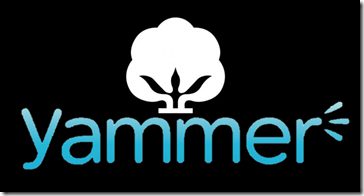Social Has Replaced Cotton as the Fabric of Our Lives
As Microsoft has moved into a cloud deployment model for all of its software and platforms, most organizations are trying to keep up with the changes that have been released and that are coming soon. We often hear about how much has changed inside Microsoft to meet this new real-time delivery cadence, but less about the impact within organizations as they adjust. Of course, this "new normal" will settle down and our business processes will adjust over time, because this model is becoming ubiquitous across technology vendors.
 One of the fastest moving categories within Microsoft’s portfolio, of course, is social. The Yammer acquisition a couple years back brought not only new technology, but more importantly a new (to Microsoft) way of delivery technology. And that methodology has permeated the company. To be fair, some aspects of the company were already moving that direction….but Yammer brought it all to the forefront.
One of the fastest moving categories within Microsoft’s portfolio, of course, is social. The Yammer acquisition a couple years back brought not only new technology, but more importantly a new (to Microsoft) way of delivery technology. And that methodology has permeated the company. To be fair, some aspects of the company were already moving that direction….but Yammer brought it all to the forefront.
Why is social moving so quickly? Why can’t Microsoft build something cool and just leave it alone for a while, and let it all soak in? Companies want consistent social experiences across their enterprise applications, ensuring productivity as employees move between work streams, such as moving from a customer interaction to providing feedback on a product design. It’s not just about a standalone community site, but about delivering and then fine tuning social features to span across our most critical business workloads. We’ve long heard about this idea of a "social fabric" being woven across our tools and platforms. It’s finally being delivered.
Customer Relationship Management (CRM) is a great example of an area where companies are striving for integrated and seamless social experiences to improve productivity, with Microsoft and other vendors providing social solutions that allow internal resources to better collaborate with customers, and with each other regarding the customer, giving the company a more holistic view of what is happening with that customer. This will allow the company to be much more responsive to the immediate and long-term needs of the customer, while providing visibility of each interaction to the broader team so that they can better track where customer requirements originate and how to respond. And as social activities become sources for machine learning (through Office Graph) and linked to a shared data repository (SQL Server via SharePoint lists and libraries), these kinds of integrations will have a profound effect on both search and discovery.
I’ve long talked about how within SharePoint there are four key facets of improving Information Worker (end user) productivity: workflow, forms, taxonomy, and social. The first three seem obvious enough: workflow automates the interactions between individuals, forms simplify and make more comprehensive the inputs, and taxonomy helps end users better classify their content and add context to their activities.
That social fabric we keep hearing about will soon have its hand in all of these things. Everything within SharePoint runs on metadata: it provides context, it allows you to standardize the application of taxonomy to content as your end users add their documents and other artifacts. Social can be a primary driver of folksonomy, which is to say, end-user generated keywords. As content is shared within SharePoint, social provides an opportunity for end users to apply additional tags that make sense to them, that help define the artifact in a way that makes sense to them, and that will help them search for and find the content again. Folksonomy may not follow a defined hierarchy or taxonomy, but can be any value entered into a keyword field. Social is a way to correlate and connect discovered content (through search or social interactions) in a way that cannot be automated, the fruits of which we are beginning to see as Office Graph is more widely adopted within our organizations.
How does all of this help you improve or optimize your metadata, you ask? If your end users are using the social capabilities within SharePoint to interact around content, adding their own tags, as well as commenting, liking, rating, and sharing that content, you’ll end up with a wealth of rich contextual data. Assuming your organization has a good handle on its governance model and management of your taxonomy, you can then go through these end-user generated keywords and promote relevant keywords up to your formal taxonomy, expanding your list of synonyms, deleting irrelevant tags, and so forth. As a result, your taxonomy improves, ensuring new content being added to your portal is more searchable, more findable, more shareable.
Metadata is improved in when people interact, and as many of us are now experiencing — social is quickly becoming the leading method for how people interact in enterprise applications. The more we use these social tools across our various workloads (email, Office apps, CRM, SharePoint) the more interconnected our information assets will become, providing rich connections and metadata, which will augment search and discovery. Social has officially replaced cotton as the fabric of our lives.




